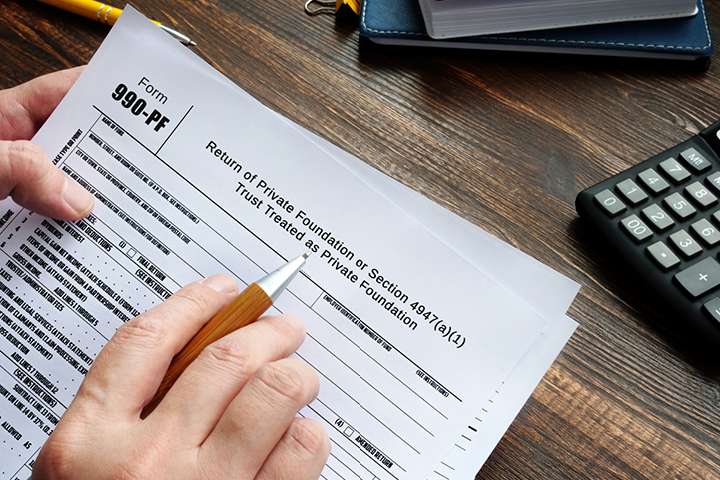
As seasoned nonprofit professionals, you understand how significant it is to maintain your tax-exempt status. You’re also likely aware of the monetary penalties that can follow if you don’t follow IRS filing requirements and submit your iteration of Form 990 by the established deadline.
But, beyond these basic points, you might not know the ins and outs of more detailed supplementary nonprofit tax forms, also known as Form 990 Schedules. So, let’s explore the details of Form 990 Schedules to help you stay in compliance and retain your tax-exempt status.
What are Form 990 schedules?
Form 990 schedules are extra forms that nonprofit organizations must fill out that provide further information to the IRS past the bounds of Form 990.
Not every nonprofit will fill out all of the schedules. The schedules are listed in alphabetical order and apply to different types of nonprofits in the sector based on the organization’s size and activities. For instance, this is the general information of the most common Form 990 schedules, according to the IRS:
- Schedule A: Organizations that file Form 990 or Form 990-EZ use this schedule to report on public charity status and support.
- Schedule B: Organizations that file Form 990, 990-EZ, and 990-PF use this schedule to elaborate on revenue from donors contributing $5,000 or more
- Schedule C: Organizations that file Form 990 or 990-EZ use this schedule to explain their political campaign and lobbying activities.
- Schedule D: Organizations that file Form 990 use this schedule to report on donor-advised funds, conservation easements, art and museum collections, escrow or custodial accounts, and endowment funds.
- Schedule G: Organizations that file Form 990 or 990-EZ use this schedule to report on professional fundraising services and fundraising events.
- Schedule J: Organizations that file Form 990 use this schedule to report on the compensation for officers, directors, trustees, and the highest-compensated employees.
The specificity of Form 990 schedules is why your nonprofit must understand which form you qualify for before filing. Furthermore, keeping detailed and accurate data year-round will facilitate the filing process so you aren’t scrambling when it’s time to send in your forms.
Who fills out Form 990 schedules?
The handling of your nonprofit’s taxes is so important that your team should consider enlisting help while filing your forms.
One option is to work with a financial professional. Double the Donation recommends using an accountant if your organization has room in its budget and complex financial records and needs. Whether you choose to hire an in-house accountant or contract with an external party, ensure that they comprehend the unique financial requirements of nonprofit tax filing, as they differ significantly from other types of taxes.
That being said, hiring an accountant isn’t a feasible solution for some nonprofits. If this is the case for your organization, you can also turn to an authorized e-filing solution to submit your nonprofit taxes. According to File990, the most effective e-filing platforms will plug your EIN into an IRS database to determine which forms you need to send. This is a great solution for nonprofits with tighter budgets that want a tax approach tailored to nonprofits.
No matter which solution you choose, make sure your team is on the same page about the importance of data hygiene and staying vigilant in reviewing and approving tax forms.
When are Form 990 schedules due?
Like the main Form 990, its schedules are due the 15th day of the 5th month after the end of the fiscal year. However, your nonprofit might be able to augment their time by applying for an extension ahead of the deadline. What are the benefits of filling out Form 990 schedules?
Besides maintaining your organization’s legal compliance with the IRS, you can use the information compiled for your Form 990 schedules to improve your nonprofit’s operations. For instance, you can use these schedules to:
- Help gauge your organization’s financial health and where you can improve if necessary
- Boost transparency with your supporters by making your financial data publicly available
- Illuminate your nonprofit’s activity for grantmakers
While you should be monitoring your financial activity all year, the tax filing season provides a good opportunity to analyze your data as you’re completing your forms and set goals for the future.
Wrapping Up
It doesn’t matter if you file the full Form 990 or the abridged Form 990-EZ—there’s probably more information about your organization that the IRS wants to know than can fit on the main form. So, make sure that you update your nonprofit data hygiene practices as your organization grows to accommodate more information and make the filing process as smooth as possible. Ultimately, as long as you stay attentive and organized while completing your nonprofit’s forms and storing data, you can reap the benefits of tax-exempt status.